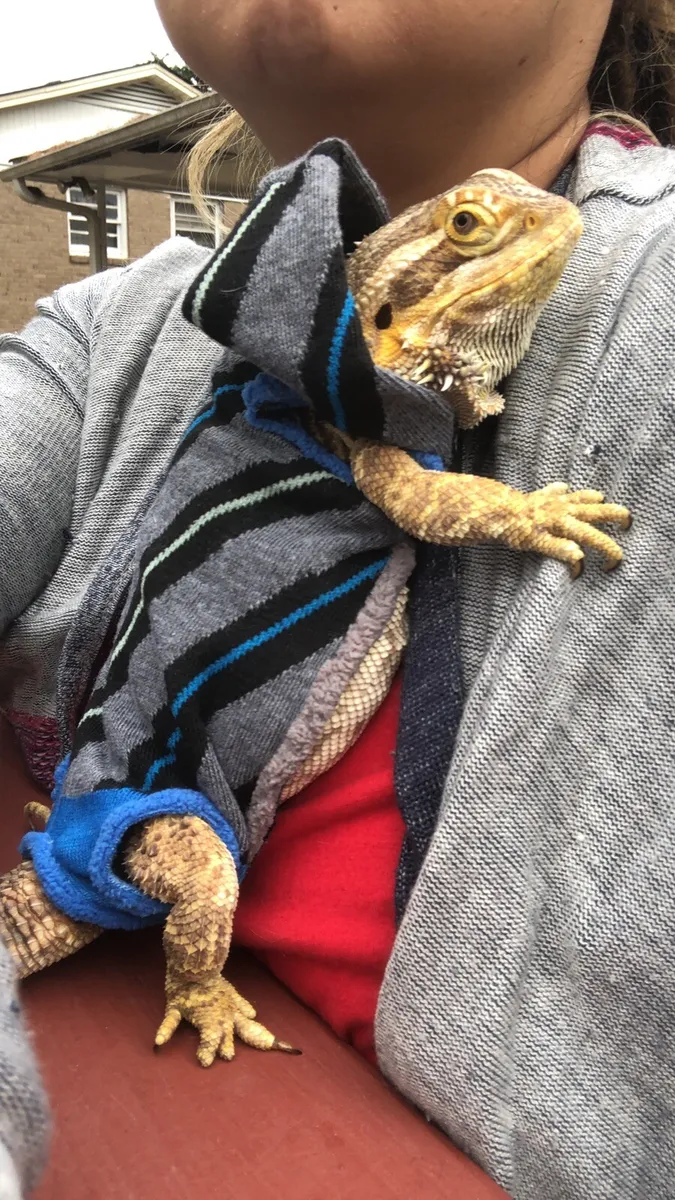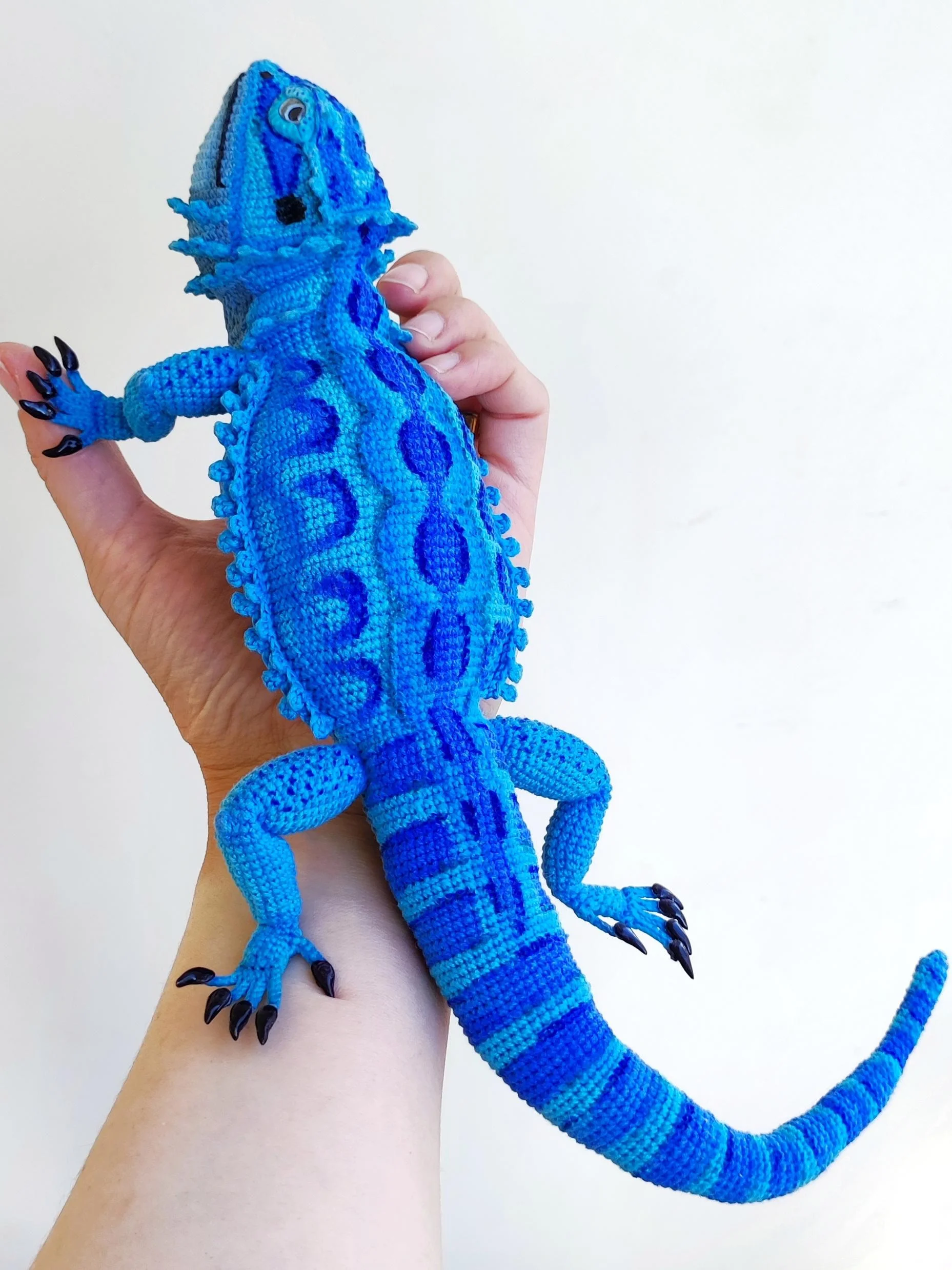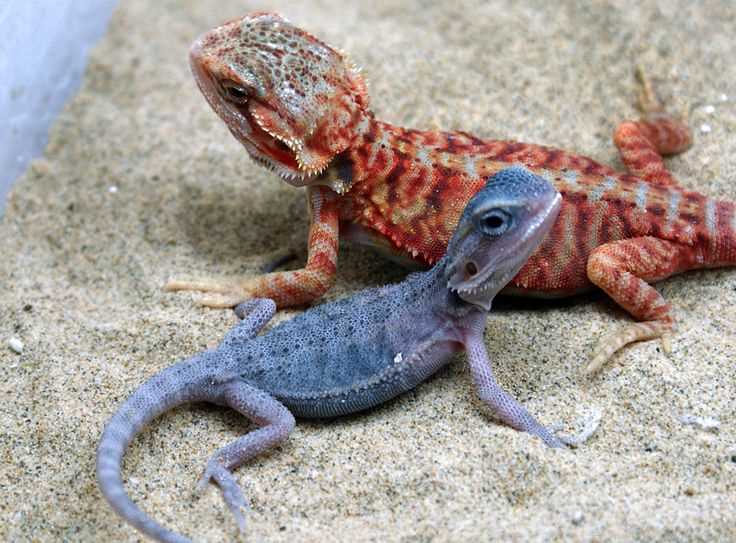What sets blue bearded dragons apart from their counterparts is their stunning blue hue. While most bearded dragons display shades of brown, orange, and yellow, the blue variation is a rare gem in the reptile world. Their brilliant blue coloration makes them stand out in any collection, and they are often highly sought after by reptile enthusiasts.
What Makes Blue Bearded Dragons Unique?
Blue bearded dragons are a unique and fascinating variant of the bearded dragon species. They stand out from other bearded dragons due to their stunning blue coloration. This distinctive hue is not commonly seen in reptiles, making blue bearded dragons a sought-after pet for reptile enthusiasts.
Temperament and Behavior
Caring for Blue Bearded Dragons
| Aspect | Requirement |
|---|---|
| Enclosure | A spacious terrarium with appropriate lighting, heating, and ventilation. |
| Temperature | A basking spot of 95-105°F (35-40°C) and a cooler area of 75-85°F (24-29°C). |
| Humidity | 20-40% humidity is suitable for blue bearded dragons. |
| Diet | A varied diet of insects, leafy greens, vegetables, and occasional fruits. |
| Supplements | Calcium and vitamin supplements should be provided regularly. |
| Hydration | A shallow water dish should be available for drinking and soaking. |
| Substrate | A substrate that allows for easy cleaning and does not pose a risk of impaction. |
By providing proper care and ensuring their habitat mimics their natural environment, blue bearded dragons can thrive and live a healthy life. Regular veterinary check-ups are also recommended to monitor their overall health and catch any potential health issues early on.
The Origins of Blue Bearded Dragons
The blue bearded dragons are a fascinating breed of reptiles that have captivated the attention of many reptile enthusiasts. These unique creatures have a striking appearance, characterized by their vibrant blue coloration and impressive size. However, the origins of these blue dragons are still a subject of debate among scientists and herpetologists.
One theory suggests that the blue coloration is a result of a genetic mutation in the bearded dragon’s DNA. This mutation is thought to have occurred naturally in the wild, giving rise to the blue variety of this species. It is believed that this mutation affects the pigmentation of the dragon’s skin, resulting in the blue coloration that distinguishes them from other bearded dragon morphs.
Another theory proposes that the blue coloration is a result of selective breeding by humans. Over the years, reptile breeders have been successful in creating a wide range of color morphs in bearded dragons through selective breeding. It is possible that the blue bearded dragons are the result of these breeding efforts, where breeders focused on producing dragons with a unique and striking blue color.
Regardless of their origins, blue bearded dragons have become increasingly popular among reptile enthusiasts due to their distinctive appearance. They are often coveted for their striking blue color and are considered a prized possession in reptile collections.
It should be noted that blue bearded dragons, like other bearded dragon morphs, require specific care and attention to thrive. They need a suitable habitat with appropriate temperature and lighting conditions, a proper diet consisting of live insects and leafy greens, and regular veterinary check-ups to ensure their health and well-being.
Whether the origins of the blue bearded dragons are natural or the result of selective breeding, there’s no denying that these reptiles are truly unique and captivating creatures. Their vibrant blue coloration sets them apart from other bearded dragon morphs, making them a favorite among reptile enthusiasts worldwide.
Physical Characteristics of Blue Bearded Dragons

These dragons typically grow to a length of around 18 to 24 inches, with males being slightly larger than females. They have a chunky build, strong limbs, and a triangular-shaped head. Their most distinctive feature is their spiky beard, which can puff up and turn black when they are feeling threatened or displaying dominance.
The scales of blue bearded dragons are rough and bumpy, creating a textured appearance on their skin. The coloration of their scales can vary, with shades of blue ranging from light pastel blue to deep cobalt. Some blue dragons even exhibit hints of purple or teal in their scales, adding to their stunning beauty.
In addition to their vivid blue coloration, blue bearded dragons often have patterns or markings on their bodies. These markings can take the form of stripes, spots, or even a marbled pattern. The patterns can be different shades of blue or contrasting colors, such as black or white.
Another fascinating characteristic of blue bearded dragons is their ability to change color based on their mood, temperature, or surroundings. When they are feeling cold or stressed, their coloration may darken or become pale to better blend into their environment.
Overall, blue bearded dragons are truly captivating creatures with their unique blue coloration, textured scales, and varied patterns. Their physical appearance is a true reflection of their beauty and charm.
Feeding and Care for Blue Bearded Dragons
Feeding and care for blue bearded dragons are essential aspects of keeping these stunning reptiles healthy and thriving. Blue bearded dragons have specific dietary requirements and environmental needs that must be met to ensure their overall well-being.
Diet:
A good staple diet for blue bearded dragons includes a mix of leafy greens, such as collard greens, kale, and dandelion greens, along with small insects like crickets or dubia roaches. These should be dusted with calcium and vitamin supplements to ensure the dragons receive essential nutrients.
Enclosure:
The enclosure for blue bearded dragons should be spacious and well-equipped. A terrarium or reptile tank of at least 40 gallons is recommended for an adult dragon. The enclosure should have a basking spot with a heat lamp, where the temperature can reach around 100°F (38°C). The cool side of the enclosure should be maintained around 75-80°F (24-27°C).
Water and Hydration:
Blue bearded dragons require access to clean, fresh water at all times. A shallow dish or water bowl should be provided in their enclosure. They may not drink directly from the dish but may soak in it for hydration. Additionally, misting the enclosure once or twice a day can help increase humidity levels and provide additional hydration.
Handling and Interactions:
Conclusion:
Taking proper care of blue bearded dragons involves providing a balanced diet, spacious enclosure with appropriate lighting and temperature gradients, access to fresh water, and gentle handling. By meeting these needs, you can ensure that your blue bearded dragon remains healthy, happy, and thrives in captivity.
Reproduction and Mating Habits of Blue Bearded Dragons
Mating Season
Blue bearded dragons typically have a mating season that occurs during the warmer months of the year. This is when the male dragons become more active and start displaying aggressive behavior towards other males.
Mating Ritual
During the mating season, the male blue bearded dragon will first establish his territory by marking it with his scent. He will then display a series of behaviors to attract females, including head bobbing, arm waving, and inflating their throat pouches or “beards” to showcase their vibrant blue color. These displays are not only intended to attract females but also to intimidate rival males.
The female dragons will carefully evaluate the male’s displays and choose a potential mate. Once a mate is chosen, the male will approach the female cautiously. If the female is receptive, she will allow the male to mount her from the rear and mating will occur.
Egg Laying

After mating, the female will dig a burrow in the ground where she will lay her eggs. This burrow provides a safe and protected environment for the eggs to develop. The female may lay anywhere from 10 to 30 eggs, depending on her size and overall health.
Incubation Period
The eggs of blue bearded dragons have a relatively long incubation period of approximately 60 to 85 days. During this time, the eggs must be kept at a constant temperature and humidity level to ensure proper development. The female does not provide any parental care after laying the eggs.
Hatchlings
Conclusion
Common Health Issues in Blue Bearded Dragons
1. Metabolic Bone Disease: Blue bearded dragons are prone to developing metabolic bone disease, which is caused by a deficiency of calcium and vitamin D3. This can lead to weak bones, deformities, and fractures. Providing a balanced diet with appropriate calcium and vitamin D3 supplements, as well as proper UVB lighting, can help prevent this condition.
3. Parasites: Blue bearded dragons are also susceptible to internal and external parasites. Internal parasites, such as worms, can cause digestive issues and weight loss. External parasites, such as mites or ticks, can cause skin irritation and itching. Regular fecal examinations and veterinary check-ups can help detect and treat any parasite infestations.
5. Tail Rot: Tail rot is a condition where the tail becomes infected and begins to decay. It is commonly caused by poor hygiene, unclean enclosures, or injuries. Early signs include blackening or discoloration of the tail, swelling, and foul odor. Prompt veterinary care is necessary to prevent the infection from spreading and potentially causing further complications.
6. Impaction: Blue bearded dragons may experience impaction, which is the inability to pass stool due to a blockage in their digestive system. This can be caused by ingesting substrate materials such as sand or small rocks. Signs of impaction include loss of appetite, bloating, and straining. In severe cases, veterinary intervention may be required to remove the blockage.
By being knowledgeable about these common health issues and providing proper care, blue bearded dragon owners can ensure the well-being and longevity of their pets. Regular veterinary check-ups and a suitable environment are vital for maintaining the health of these unique reptiles.
Interacting with Blue Bearded Dragons: Tips and Recommendations

Creating a Comfortable Environment
Handling Techniques
When handling a blue bearded dragon, always approach them gently and with care. They can be skittish at times, especially if they are not accustomed to human interaction. It’s essential to handle them with confidence and without making sudden movements that may startle them. Additionally, be sure to support their body properly, especially when picking them up or moving them.
Proper Hand Placement
Engaging with Your Dragon
While every blue bearded dragon has its own personality, there are some general tips for engaging with them:
- Take it Slow: Allow the dragon to get used to your presence and build trust before attempting to handle them.
- Talk and Sing: Bearded dragons often respond positively to the sound of their owner’s voice. Talking or singing softly can help them feel more comfortable and secure.
- Offer Hand-Feeding: Hand-feeding your dragon with treats, such as small insects or fruits, can help establish a bond and strengthen the trust between you.
- Provide Enrichment: Offer a variety of toys and items for your dragon to interact with, such as small balls or DIY puzzle feeders. This helps stimulate their natural behaviors and provides mental stimulation.
- Observe Body Language: Pay attention to your dragon’s body language and react accordingly. If they show signs of stress or discomfort, give them some space and try again later.
Remember, every blue bearded dragon is unique, and it’s essential to respect their individual preferences and boundaries. By providing a comfortable environment, using proper handling techniques, and engaging with your dragon in a positive and patient manner, you can build a strong bond and enjoy many rewarding interactions with your blue bearded dragon.

I’m Lena Adams—a product of an unconventional upbringing in the African wilderness. My father, a daring explorer of African wildlife, sparked my fascination with reptiles, a passion that intertwined with the tragic loss of my mother during an expedition, leaving an indelible mark on my life. Driven to understand the creatures that captivated my parents, I embarked on my journey, sharing insights about reptiles, frogs, and lizards on my website. Through my explorations and conservation efforts, I honour my family’s legacy while seeking connections—to the creatures, nature, and the mother whose presence I yearn to understand.
